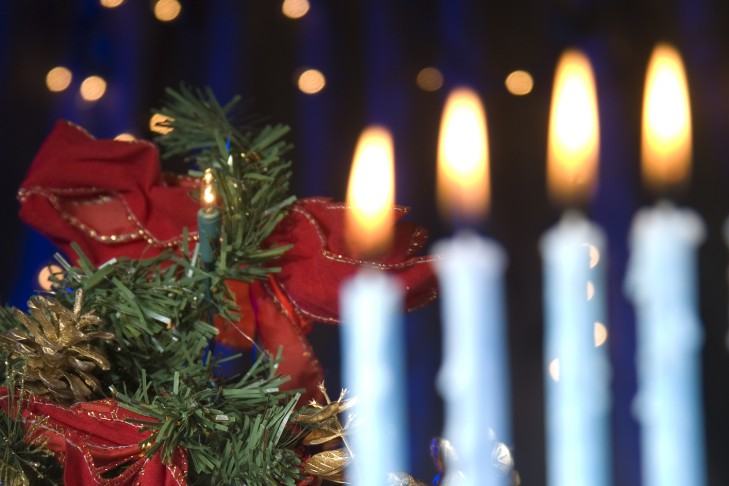Well, here we go again: It’s the “holiday season” when the annual exercise in comparisons are abound, with Christmas seemingly dominating Hanukkah everywhere you look. Even the physical therapy clinic where I receive treatment twice a week is filled with green, red and silver ornaments in every corner of the space. Here and there, if you really squint, you might discover a tiny menorah or a sad dreidel sitting unobtrusively next to a large container of hand sanitizer.
Building lobbies are replete with large Christmas trees adorned with the usual decorations, and, more often than not, some form of diminished blue and white display. Sometimes even small blue and white trees are displayed, leading many to think that somehow Hanukkah is the Jewish Christmas. Of course, the same goes for retail stores, particularly in regions with a sizable Jewish presence. Should they even bother with what often feels like tokenism?
This year, rather than feeling like an outsider who’s not really invited to the party, I’m trying to adopt a new mindset: the dominant culture’s Christmas decorations juxtaposed with the minority’s Hanukkah symbols can actually highlight the miraculous survival story of the Jewish people. I mean, we can’t compete with Christmas (or even those pervasive carols), but we can demonstrate both to ourselves and to the world how our humble traditions of lighting the menorah, singing lively holiday songs, eating potato pancakes and even spinning dreidels over the course of eight days continue to remind us of the miracle of preserving our unique national and religious identity in the face of powerful opposition lasting centuries.
Jews often feel the need to make the case in this holiday season that Christmas and Hanukkah have nothing to do with each other and cannot be compared. While each holiday marks a totally different event—the birth of Jesus and the victory of the Macabbees from being cancelled by the forces of Hellenism—the two standing side-by-side actually have symbolic significance for the Jewish minority: Hanukkah in America, a predominantly Christian country, represents the Jewish community’s victory over the forces of assimilation within the majority culture.
I am well-aware that this observation may seem a gross exaggeration as more and more of our adult children choose life partners outside of the faith. Indeed, many adopt both the tree and the menorah without seeing any contradiction. As I personally endeavor to adapt to this new reality which directly affects my own family, I am learning how to look on the bright side: the Christmas tree beside the menorah may be telling its own new tale: they are coexisting, while reminding the Jewish people that there is still tremendous power in our small-scale rituals. Lighting modest candles along with blessings and singing “Rock of Ages” reinforce our unlikely survival story. By placing our lit menorahs in our windows, we show pride in our history and enduring values of resilience and faith. Moreover, we take a stand against the dark forces of antisemitism so pervasive in our country today. Each night the light increases inspiring us to build up our own inner resources to create a strong Jewish future for our tiny but stubbornly adaptive people.
Yes indeed, while on the surface we may understandably react negatively to the juxtaposition of the Christmas tree next to the menorah, perhaps they have their own story to tell, whether in commercial or family settings. It’s up to us to decide how that ongoing story plays out.
This post has been contributed by a third party. The opinions, facts and any media content are presented solely by the author, and JewishBoston assumes no responsibility for them. Want to add your voice to the conversation? Publish your own post here. MORE



